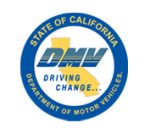
CA Dept. of Motor Vehicles (DMV) Case Studies
DMV registers vehicles in California and licenses their drivers. This amounts to about 33 million vehicles registered and approximately 23 million licensed drivers.
Other major DMV functions include: recording ownership (certificate of title) of the vehicles DMV registers; maintaining driving records (accidents and convictions) of licensed drivers; issuing identification cards for individuals; registering and recording ownership of vessels; licensing and regulating driving and traffic violator schools and their instructors; licensing and regulating vehicle manufacturers, transporters, dealers, distributors, vehicle salespeople, and dismantlers; administering the Financial Responsibility Law; investigating consumer complaints; maintaining records in accordance with the law; collecting approximately $6.5 billion in revenues annually.
Project Sponsor Training
The California Department of Motor Vehicles (DMV) is responsible for registering some 26 million vehicles and licensing over 20 million drivers. In addition to registering vehicles, issuing titles of ownership, issuing licenses to authorize motor vehicle usage, promoting traffic safety, and regulating the motor vehicle industry, the California Department of Motor Vehicles is also responsible for establishing the true identity of California driver license and ID cardholders. With the passage of the Federal Real ID Act in 2005, the California DMV was challenged with meeting new requirements for identification within a specified timeframe. Only ID cards and licenses meeting Department of Homeland Security standards would be allowed to access federal facilities, board federally regulated commercial aircraft, and enter nuclear power plants. To be compliant with the Federal mandate would mean monumental process, organization, and technological changes for the California DMV. The DMV was unsure that its REAL ID Program could establish compliance when needed.
Delegata offered portions of four solutions to address DMV’s ability to meet the Real ID challenge:
– Align Program and Projects – to establish fundamentals for large program initiation
-
- Transform the Enterprise – to define new capabilities to meet enterprise needs
-
- Grow Capability through In-Sourcing – to establish an Organization Change capability
– Orchestrate Legislative Implementation – to ensure the full extent of the law would be met
For the California Department of Motor Vehicles to become Real ID compliant, it would have to undergo a journey of transformation from non-Real ID compliance to Real ID compliance. As with any journey, DMV needed to understand the state of the pre-Real ID As-Is organization, what it meant to be Real ID compliant (To-Be state), and chart a course for successful transition to a defined target state for organization capability. Delegata facilitated DMV’s subject matter experts in the production of the deliverables that defined the REAL ID Portfolio of Projects needing to be completed to produce a REAL ID compliant DMV within the mandated timeframes. Delegata also assisted the DMV Project Organization in establishing key Organization Change capabilities to serve the DMV’s transition to a REAL ID compliant organization.
Delegata led the production of the deliverables that revealed a holistic picture of the “As-Is”, “To-Be”, and “Gap” of the REAL ID Non-Compliant DMV. The As-Is represented DMV’s current holistic picture of organization capabilities. The To-Be represented DMV’s required holistic picture of organization capabilities. The Gap identified the changes (additions, modifications, deletions) required to transform the As-Is into the To-Be DMV state.
The Gap clearly demonstrated requirements for compliance and allowed the DMV to plan defined projects to establish systemic capability as well as compliance. The portfolio of projects identified clear resource demands and priorities to allow achievement of this significant, mandated requirement. The Organization Change capability allowed the DMV to use their own tailored methodology to control change activity throughout compliance implementation activity.

